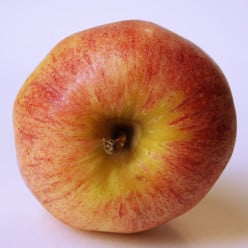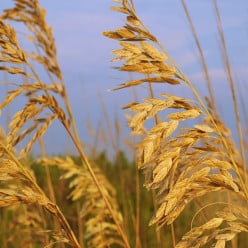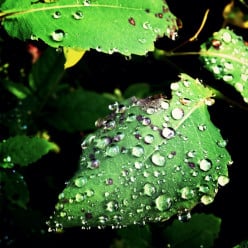Cover Photo
HP just published a newsletter encouraging all writers to include a cover photo with their articles. I always insert a photo right after the first paragraph, but is that what HP means?
I've seen a few other articles that have photos with their title written across/inside the photo. I have maybe two articles out of 150 that are like that. Do I need to go back and redo the rest?I'd like to know the answer to that, as well. When I read it last evening, I had the exact same question...
Thanks for raising this Susette. I have no idea what was meant by a cover photo and I wondered if it was another of those new-fangled modern things that us people of a certain age don't get like "on fleek" and "woke." I assume it's an eye-catching image at the start of an article. I always put one in after the introduction but sometimes editors move it above the intro where it gets tangled up with the intrusive videos about how butterflies play chess or some such.
Clarification please.Yes, that is what a cover photo is. It should go above the intro—the first capsule in an article.
Can it just be a photo or should it include graphics like Pinterest pins do? I'm not terribly creative so photos + graphics would be difficult for me.
I'm sorry this is creating so much confusion, haha. Yes, it can be anything visual (static). Just as long as it precedes the content.
So we don't need to superimpose verbiage over the photo? To be honest, I'm not a fan of that look.
It does help to encourage people to pin the photo which provides a link back to the article that it came from. Less people are likely to pin photos without overlayed explanatory text.
Actually, my second highest source of traffic (Google is the first) is Pinterest. I'm not active on the site, although I have an account. I'm pretty ignorant when it comes to social sites. I'm not a fan. I wonder what's on Pinterest that brings readers to my work on HP.
Is there a recommended size for a cover photo? I notice that many of them are cropped when they appear on the topic pages, and the crop is often (usually?) not optimal.
It's a bit more complicated now on Maven than it was on the older sites, because the aspect ratio of an image depends on where on a site it's displayed. So on niche site home pages, preview thumbnail images are square, i.e. they have a 1:1 aspect ratio, but when you click on a category and move down a level, preview images become rectangular with a 2:1 ratio. So ideally you should keep any overlayed text in the centre vertically because the top and bottom will be cropped off to make the image rectangular. As regards pixel size, make images 1200 pixels wide if you can. That's the max image display size in pixels if you zoom by right clicking on an image when viewing an article on desktop and select "view image" and then left click again. It's better to upload at as high a resolution as possible to future proof against any improvements Hubpages makes to the zooming controls, especially if there's small detail which may be of use to a reader. Also if possible, compress images before uploading so that pages will load faster. You can usually do this in your favourite image processing application by setting the export/save option for jpgs before you click the "save" button. This doesn't reduce pixel dimensions, just image size on disk.
Thanks for this information. I'll have to do some experimenting. I haven't used any cover images on my articles so far, but as it's recommended, I'll give it a try.
I dont think a cover photo is of any help at this point when HP has decided to include unrelated cover videos that encourage bounce rate.
I agree with you Dr. Mark. Google Analytics emailed me to tell me I had 1.5 million visitors in November, however, the bounce rate was ridiculous. The most read articles are pretty much the same as before HP turned its niche sites over to the Maven format. However, the bounce rate is at least double what it was before those annoying videos took over the page.
Yes, it is very sad to see those numbers. I do not know if many readers remember the unrelated videos and ads, and the inabllity to leave comments, but I know from my own experience that I remember sites like that and put it on my mental "do not waste my time" list.
Yeah. I do the same. Too bad we didn't have a say in the change.
I'm not comfortable being part of a site that turns readers away. That's why I haven't been motivated to write lately.
Me, too. All of my articles have a pic after the title. I remember years ago when we were strongly encouraged to place a photo/image at the top. It was called something else at the time, not "cover photo."
I always include a photo before the into as well. But I don't throw text across it. To me, that detracts from the image. More times than not when I see photos with text on them, it's a reiteration of the title. I just don't like that. Let the article back up the title and let the photo speak for itself. Maybe I'm too old school, but that's my opinion. I personally don't like photos that are marred by text.
I think that's fine if you've picked a perfect photo that persuades the reader your article is going to answer their question.
Imagine a reader, arriving from Google, eager to get a solution to his question or problem. They see a big irrelevant video. They keep scrolling - now they get a big white space with title, sharing buttons and a bio on it. Keep scrolling - it's a photo. Where's the answer to my question? Forget this, I'll go back to Google and try again.
If the video wasn't there, it wouldn't be so much of an issue. But even without the video, the picture needs to be something that will convince the reader you're going to give them the answer they're looking for - not just a pretty photo. Otherwise your bounce rate will be high.Good point, Marisa. Frankly, I think the leading videos create a higher bounce rate in and of themselves, since you can't click them off.
Photos with graphics create "pinnable" images. When you see a photo with graphics superimposed, the author is hoping that readers will pin their article and drive more traffic to it.
Having said that, I am not a fan of the look either so I don't do it for my articles.I tend to agree with you, bravewarrior. There was another strong urging in more recent years about making that first photo "MFP" as OldRoses is referring to. I stopped doing it. I'm not sure if HP/Maven editors feel that it's necessary anymore. The phot text and title are redundant on some of mine.
I usually look for free-to-use photos in my lists of sites that are both captivating and eye-catching, or just all-around aesthetic. And if there's none (which is a rare), I search and put credit. Now I manage to create and design my cover photos (using my own designs, photos and others) using mobile photo editing tools. Been doing it for the past months. Although, I only put a "modified" cover photo for my articles that are doing well and will do well in the future, and I still revise/redesign most of them from time-to-time as well.
Absolutely right Marisa. That's why I always put my intro above the first image so that readers get a signal that "yes this is what you were looking for when you Googled something." I get a bit miffed when editors switch the capsules around, but maybe they know something about human reading behaviour that I don't. However, it seems to me that people have been trained to want instant gratification and if they don't get it they'll go somewhere else.
OMG I just looked at my highest performing article and couldn't believe it. It starts out, like you've all said, with a headline banner ad, then a huge "Pet Helpful," then a big video that has nothing to do with the article, then my short bio. By the time it gets to the first text, which is also huge AND double spaced, I have to scroll down and I'm looking on a 12x20" screen! Then the d*** video follows me, so I can't read the text until I shut it off. If I were looking for info, that's where I would leave.
In this case, I decided to scroll down further to see what I could find. OK, there's the first photo. Beautiful! A big green parrot. That's what I was looking for. Immediately below that is another big photo. A new car with a sexy lady??? An ad. After that, it seems like every paragraph is followed by an ad of some sort. I really do not like this. No wonder my readership has dropped off so much. My income too. (Is Maven taking it all?) Too much of a "good thing" is too much, period.Even if you don't have a cover photo at the top of an article, as far as I know, the first image further down will be pulled out and used as a thumbnail if the article is listed on niche site homepages or in categories. The main function of the cover photo though is to act as an eye-catching image when viewers land on a page.
Related Discussions
- 19
An Interesting Experiment With Photo Upgrades
by Sondra Rochelle 10 years ago
After reading the forums about using wide capsules and carefully captioning each one, I went back yesterday to the first four or five hubs I published and upgraded them. I widened the first photo, where possible, and wrote a more pertinent caption, and did the same with all the...
- 23
Bounce Rate the Problem with the Photo Capsule You Need to Know About
by Wendy Hughes 10 years ago
I know traffic is a problem everywhere it seems; I'm not talking about low traffic, here. We all need to be aware of the HP's photo capsule may be affecting our bounce rates. There is a real problem if you use the photo capsule for anything-- even the intro photo. I'm NOT referring to the images...
- 32
When We See Something That's Effective
by Paul Edmondson 13 years ago
We've been talking about leading photos in the forums and while it's not just about having a leading photo, it's about having a really great leading photo. We recommend this because we see these photos get shared a disproportionately number of times higher.The quote of the day "People...
- 19
Pinterest question
by Janis Masyk-Jackson 2 years ago
I'm trying to pin some of my articles, but I only get the Pinterest icon in author view. In regular view, it will only pin Hubpages as a whole, not my individual articles. Am I supposed to use author view?
- 39
How to Protect Your Photographs on Hubpages Without Watermarks
by Susannah Birch 13 years ago
I'm aware that many people who have take their own photos and added them to hubs have been unhappy about the "No watermarks" rule on Hubpages.There is a simple way around this - that should both protect your content, increase your traffic and not break the rules.Create a MADE FOR...
- 62
Question: Time spent on page vs Bounce Rate
by Sophia Angelique 13 years ago
I don't understand something.If the average time people spend on an article is 4.5 minutes, how can the bounce rate be 90%? Doesn't 'bounce' mean that they just go on the site for a split second and then go off?



















